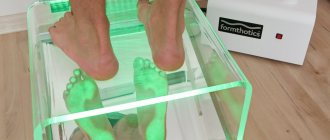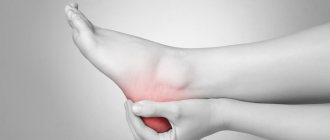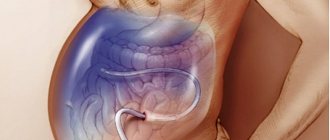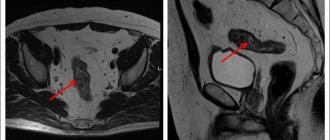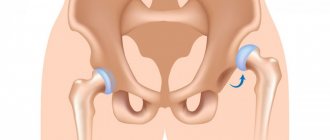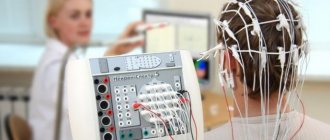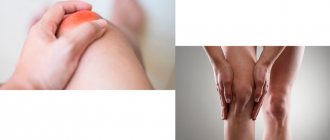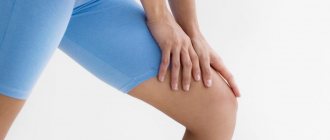What is a heel spur
Heel spurs are a common condition that is most common among overweight people and athletes. It develops slowly and is easy to treat. However, if heel fasciitis is not treated on time, it leads to disability, inability to move normally, and constant pain in the leg.
In the international classification of diseases, heel spurs are called plantar or plantar fasciitis. The plantar fascia is a sheet of connective tissue that begins at the top of the heel bone and runs along the sole, dividing into 5 rays.
In its normal state, the fascia is always stretched - this helps us move normally. The plate protects the muscles and bones of the leg from damage and takes on the entire load. However, the fascia can become damaged or inflamed, a condition called fasciitis. Due to the deposition of calcium salts, the disease causes severe pain when walking.
Treatment of callus with medications
It is immediately worth noting that drug treatment of calluses has the least therapeutic effectiveness.
This phenomenon is associated with the inability of drugs to penetrate deep into tissues, eliminating the root of the formation.
The products used for core calluses often contain keratolytic components and can be effective at the beginning of callus development.
As a rule, products based on salicylic acid are used.
Salicylic acid is a keratoplastic and keratolytic agent.
In addition, it has an antibacterial and antifungal effect.
Salicylic acid works by softening keratin, a natural protein that is part of the skin's structure and produced by the body.
The drug has a softening effect on the stratum corneum of the dermis, which facilitates its removal.
Salicylic acid is often used in combination with other substances.
Allows for a higher therapeutic effect.
When using salicylic acid preparations, the simultaneous use of the following drugs is not recommended:
- Alcohol-containing medications.
- Any other local medications that contain dibenzoyl peroxide or retinoid.
- Soapy substances that have a drying effect.
- Cosmetics that have an exfoliating effect.
How the disease develops
Symptoms of heel spurs are mainly caused by microtrauma to the fascia. Under normal conditions, the heel bears the entire load when walking or running. Any vibrations are absorbed by the fascia - it protects fragile joints and muscles from rupture.
Sometimes the load exceeds the permissible limit, which leads to the appearance of micro-tears. In young and healthy patients, the injury heals quickly - the plate is restored asymptomatically. However, with age, the body's regenerative ability decreases and the connective tissue does not heal, which leads to inflammation of the fascia.
The cells of the plantar plate begin to gradually deteriorate, pain and swelling appear. Since there is a lot of calcium in the connective tissue of the heel, micro-tears release it and accumulate in the body. Salts gradually build up on the bone, forming a small build-up. It looks like a spur, which is where the disease got its popular name.
Compresses
Treatment of heel spurs at home is often carried out with special compresses that can be made from everyday products. Their main varieties:
- Garlic compress. Garlic cloves must be grated, then applied to the damaged area of the foot and wrapped in cellophane. Subsequently, you can put a warm sock on it or wrap it with woolen cloth. It is recommended to keep this compress for at least 3 hours. If during the treatment you begin to feel a strong burning sensation, then the garlic should be removed and the foot should be washed in warm water.
- Garlic compress with chalk. It is analogous to the previous method, with the only difference being that you initially need to mix grated garlic with chalk in equal proportions. Before wrapping your feet, it is advisable to warm them in a warm bath.
- Sea salt and honey compress. The ingredients are mixed in equal parts and applied to the foot overnight. In the morning, it is advisable to rinse your feet with water.
- Cabbage leaf is smeared with honey and applied to the sore spot. The best effect is achieved by wrapping the foot at night. The minimum course is 3 procedures.
- A relatively modern method that demonstrates effective results. Need to mix: 100 gr. lard, 1 egg and 100 ml of acetic acid. The resulting mixture must be infused for at least three weeks in a place inaccessible to sunlight, stirring occasionally. After the infusion is ready, proceed to applying a compress. To do this, steam the foot and apply a cotton swab soaked in the solution to it, and put a warm sock on top of it all. Duration of treatment – 1 month.
- Compress made from dough cake with honey. To prepare it, you need to roll out the dough into a pancake shape and spread it with honey. The resulting compress is applied to the leg overnight.
- Unpeeled boiled potatoes with kerosene. The potatoes are boiled and placed in a plastic bag. About 5 grams are added there. kerosene. Then the bag is fixed on the sore foot. It is recommended to do at least 12 sessions of this compress, only then will the pain begin to fade away.
- Vodka compress. To prepare it you need to take 45 grams. bile, 25 gr. vodka and 10 gr. grated laundry soap. These components should be thoroughly mixed, placed on a piece of cloth and tied to the steamed heels.
- Compress of aspirin and iodine. Aspirin tablets are crushed and filled with an iodine ampoule. It is advisable to thoroughly treat the damaged areas of the feet with the resulting mixture. It is recommended to use this compress no more than twice a week.
- Compress made from raw potatoes. The product is grated on a coarse grater and placed on gauze or bandage and wrapped around the foot. The compress is left overnight.
- Black radish compress. The washed vegetable along with the peel is grated and applied to the sore spot overnight.
Causes of plantar fasciitis
Minor fascial injuries are common among people leading an active lifestyle. But additional factors contribute heel spur syndrome Inflammation is caused by:
- Excess body weight. With obesity, the load on the heel already increases. Therefore, any fascia ruptures lead to serious complications.
- Professional sports. Behind sports achievements there is an extensive hospital record. Athletes often experience problems with joints, ligament ruptures, and inflammation of the plantar plate.
- Metabolic disorders. The main risk factor is previous gout.
- Diseases of the musculoskeletal system. The risk group includes patients with osteochondrosis, arthritis, arthrosis, and ankylosing spondylitis.
- Diseases of the cardiovascular system. Fasciitis is a common complication of vascular endarteritis and atherosclerosis.
- Elderly age. According to statistics, after 75 years of age, heel fasciitis is diagnosed in 80% of patients.
- Bad habits. Alcohol and addiction to cigarettes disrupt metabolism and lead to degeneration of connective tissues.
- Unbalanced diet. If the body lacks beneficial vitamins or microelements, even a minor injury to the plantar plate will not heal without medical attention.
How does the disease manifest itself?
A calcaneal spur develops gradually. In the first stages it goes unnoticed. Sometimes patients discover that they are sick only during a routine X-ray examination. In some cases, visual changes in the foot—that same spur—are not observed. It is only discovered during examination.
The disease is characterized by the following symptoms:
- Sharp sharp pain. Patients describe it as “like stepping on a sharp nail.” In the early stages, the pain occurs in the morning and evening, and goes away by mid-day. Later, the pain syndrome becomes chronic. Patients in advanced stages cannot walk without crutches.
- Increased intensity of pain attacks. The pain syndrome begins even without physical activity.
- Severe discomfort. The spur begins to interfere and hurt after a long rest, when a person gets up on his feet in the morning.
- Changes in gait. The person tries not to step on the heel, transferring the center of gravity to the toe. In particularly advanced cases, flat feet develop.
Minimally invasive technique with X-ray control
Best materials of the month
- Coronaviruses: SARS-CoV-2 (COVID-19)
- Antibiotics for the prevention and treatment of COVID-19: how effective are they?
- The most common "office" diseases
- Does vodka kill coronavirus?
- How to stay alive on our roads?
To perform a minimally invasive operation, you only need one incision up to 3 millimeters long. A triangular sharpened scalpel is inserted through the hole - it cuts off the fascia at the point of attachment to the heel bone. The spur itself is removed with a cutter, which is inserted into the same puncture.
The process causes virtually no injury to the person being operated on - after 2-3 days he can get back on his feet. In addition, there is no need to apply a cast during rehabilitation.
X-ray equipment in this case is used to monitor the operation - it performs a role similar to an endoscope camera in endoscopic surgery.
Diagnostic methods
The symptoms and causes of heel spurs are common to several serious diseases. To begin with, the doctor collects anamnesis, analyzing the information received. Plantar fasciitis is a common disease, but without exposure to risk factors it does not develop.
The next step is a visual inspection. In later stages, the doctor may notice a bone growth. The disease often manifests itself as redness of the heel, swelling, and severe swelling. When pressed, the patient feels severe pain.
If necessary, to clarify the diagnosis, the doctor sends the patient for an x-ray. Upon examination, a bone growth resembling a sharp thorn is visible on the heel. Sometimes the thorn grows, but does not cause discomfort. Such cases are variants of the norm. If the growth does not interfere, it is not treated.
Methods for treating heel spurs
If the reasons for the development of heel spurs are identified and the diagnosis is clarified, the orthopedist prescribes comprehensive treatment. Often people ignore the symptoms of fasciitis or begin to be treated with folk remedies. However, inflammation responds well to treatment only in the early stages! Don't waste time and don't diagnose yourself on the Internet. If you have pain in your legs, contact your podiatrist immediately.
The following treatment methods are used:
- Laser therapy. Using a laser, local blood circulation is enhanced. The pain decreases and the swelling subsides.
- UHF therapy. The leg is exposed to high-frequency alternating current discharges. This reduces the intensity of pain.
- Magnetotherapy. Similar to the previous method, but the heel is exposed to a magnetic field.
- Electrophoresis. Medicine is applied to metal plates. Under the influence of current, medications are delivered to the affected tissues.
- Shock wave therapy is a relatively new treatment for fasciitis. Heel spurs are treated with sound shock waves. This type of impact increases local blood circulation and destroys the thorn.
Advantages of the clinic
“Health Energy” is a modern multidisciplinary medical center that offers its patients comprehensive services for the treatment and prevention of diseases. Here are the benefits of contacting us:
- review and expansion of early disease detection programs;
- modern diagnostic equipment;
- qualified medical staff who regularly improve their skills;
- an integrated approach to diagnosis and treatment.
We do everything to provide each patient with maximum comfort from the first minutes of their stay in the clinic. Adequate prices make quality medicine accessible.
A heel spur is just a small bony growth that can, however, completely change a person's life. Don’t delay in seeing a doctor, make an appointment with an Energy of Health orthopedist.
How does a heel spur manifest in children?
Heel spurs most often appear in people over 75 years of age. But sometimes children suffer from inflammation of the fascia. The child’s body is just developing, so it is more susceptible to negative factors. Children constantly run, jump, and do not sit still. Therefore, micro-tears of the fascia are a common occurrence for them.
The following factors lead to inflammation:
- early sports, dancing;
- incorrectly chosen shoes that rub;
- flat feet;
- obesity;
- hereditary predisposition to weakness of the osseous-ligamentous apparatus.
The growing body is able to cope with the disease on its own. Doctors are simply monitoring the situation, trying to eliminate possible risk factors. An orthopedist will help parents choose orthopedic insoles. During treatment, sports should be stopped. Fasciitis precludes any physical activity.
Removal of callus with liquid nitrogen (cryodestruction)
Cryodestruction is an innovative, highly effective method of removing calluses on the foot, heel or toes using liquid nitrogen.
During the procedure, the keratinized area of the skin is frozen, after which the destruction of the callus is observed.
It has been noted that the procedure is associated with an extremely low rate of callus re-development.
Many dermatologists note that no other method for removing core calluses gives results as favorable as cryodestruction.
Removing callus with liquid nitrogen takes about 10-20 minutes.
It is performed under local anesthesia, so the procedure is completely painless and safe.
Side effects are extremely rare (no more than 3% of cases).
Include callus recurrence, pain, discomfort, bleeding, infection, scarring.
The first few days after the procedure, the formation of a cold bubble is observed, which under no circumstances should be pierced.
Within 10-14 days, the healing process occurs; a crust forms in place of the bubble, which falls off on its own.
The process is not accompanied by the formation of scars.
The procedure is usually well tolerated, with minor discomfort possible.
Some disadvantages of cryotherapy:
- If the rod is extremely deep, cryodestruction is not always able to completely rid the patient of the callus.
- If you do not properly care for the skin after the procedure, there is a risk of an infectious process.
- Freezing the callus with liquid nitrogen is not used when large areas of the epidermis are affected. Cryodestruction used on large calluses can lead to a number of complications. For this reason, in advanced cases, they resort to other therapeutic methods.
Features of the disease in pregnant women
Heel spurs are likely in pregnant women. A woman’s body weight in this position rapidly increases, and the ligamentous apparatus becomes more flexible. As a result, the planar heel plate softens. However, most treatments are prohibited during pregnancy as they can harm the baby.
The following therapy methods are used:
- selection of orthopedic shoes with low heels (4-5) centimeters;
- choosing an orthopedic insole;
- foot massage;
- diet planning;
- restriction of physical activity;
- preventative salt baths;
- taking vitamin complexes;
- taking choleretic medications.
Sometimes after childbirth the problem disappears on its own.
Diagnostics
Diagnosis begins with a clinical examination. The doctor should first conduct a detailed examination, a neurological examination to evaluate the functioning of the nerve roots and look for signs of compression of the nerve roots or spinal cord. Based on the examination, medical history, and patient complaints, the doctor prescribes the necessary examination plan, including the following research methods:
ENMG allows you to determine the conduction disturbance along the nerve fiber and determine both the degree of damage and the level of damage to the nerve fibers. Radiography is often prescribed primarily for the diagnosis of osteophytes and allows visualization of osteophytes in the spine . In addition, radiography can detect other changes in the bone tissue of the vertebrae.
Computed tomography (CT) or MRI can provide more detailed information about changes in the spinal structures, both bone and soft tissue, and detect the presence of compression of the nerve roots or spinal cord.
Neuroimaging data allows the doctor to choose adequate treatment tactics, both conservative and, if necessary, surgical, depending on the presence of signs of compression of nerve structures in correlation with clinical data.
Preventing fasciitis
The causes of heel spurs are varied - every tenth person is at risk, so it is better to protect yourself in advance. After 30 years or when planning pregnancy, visit an orthopedist. Do not ignore pain and other uncharacteristic symptoms.
If you have flat feet, follow all doctor's recommendations. Wear orthopedic insoles and insoles, try to limit physical activity. If you're on your feet all day, sign up for water aerobics or swimming.
In summer, walk barefoot on sand or grass more often. But be careful not to cut yourself with a random piece of glass.
Choose comfortable shoes. Both women and men need comfortable shoes with low heels - 3-5 centimeters, with a rigid frame. Shoes should not rub or be uncomfortable.
Do leg exercises. Buy a special massage mat and walk on it for a couple of minutes a day. Bend and straighten your foot, stretching the tendons. Place an empty plastic bottle under your desk and roll it around during your workday.
Proper nutrition and diet for heel spurs
To avoid complications, you need to follow a special diet for heel fasciitis. Treatment of heel spurs involves the following rules:
- Diet restrictions. The daily calorie intake should be balanced. Overeating is not allowed.
- Meals on time. You need to eat at the same time, 5 times a day, in small portions.
- Drink plenty of fluids. It is recommended to drink 2-3 liters of water per day.
- Balanced diet. The daily diet should contain 50-60% carbohydrates, 20-30% proteins, 10-20% fats.
- Taking vitamins. Once every 5-6 months you need to take a course of vitamins B, C, A, D.
If you are suffering from paroxysmal pain in the heel, and also to ensure that the heel spur does not cause complications, consult an orthopedist in a timely manner.
Massage
Massage is another way to improve blood circulation in the feet with heel spurs. The simplest complex can be done independently. The feet are first warmed up by intense rubbing, after which the active effect begins:
- small pinches with gradual movement from the tips of the fingers to the heel;
- rubbing the heel: performed with the pads of the fingers with force in different directions;
- circular rubbing: first the outer radius of the heel is grabbed, then the circles are concentrated on the spike area;
- kneading: the spur area is intensively kneaded with the thumbs;
- light tapping with the edge of the palm.
The exposure cycle is repeated 2-3 times and ends with rubbing and stroking. At the end, if necessary, an anesthetic ointment is used.
It is important to remember that the massage should not be overly painful, but slight pain is a sign that the exercises are being performed correctly. For additional stimulation of the affected area, you can use a massage mitt.
In addition to classic manual massage, the use of special relief mats and electric massagers is allowed.

